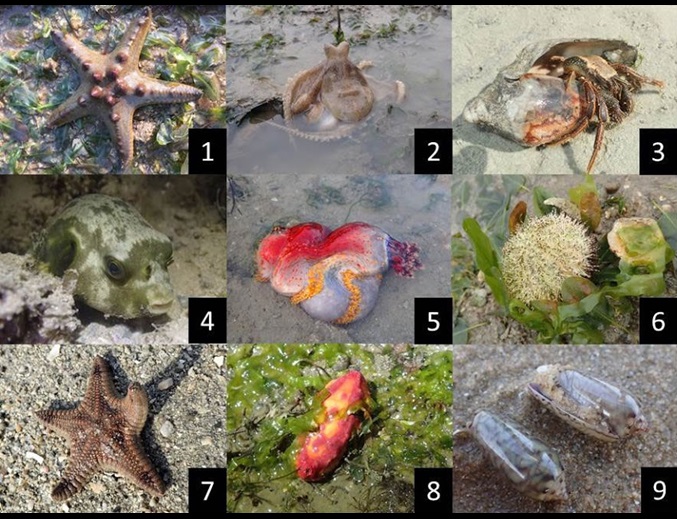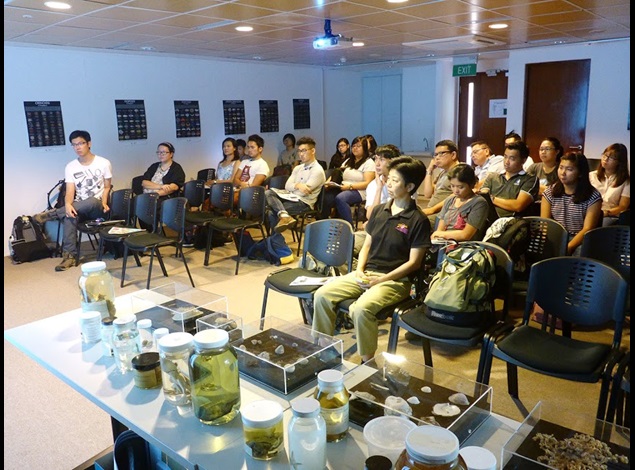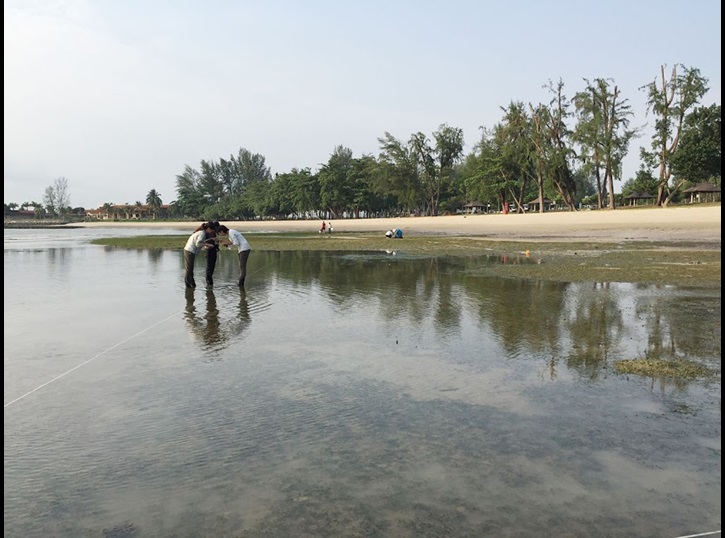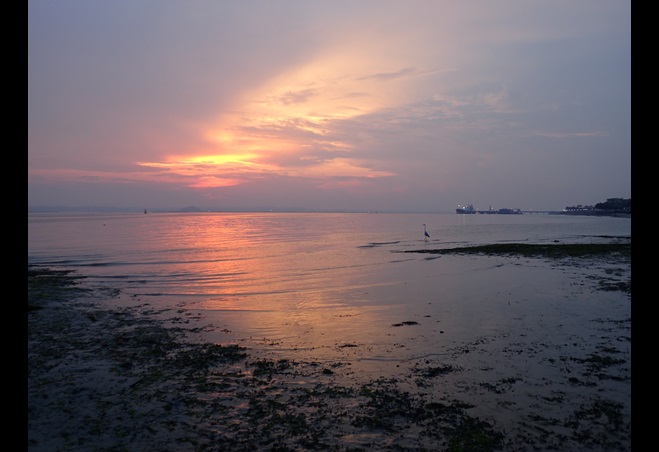Intertidal Watch: Monitoring the Living Jewels on our Shores
Sea cucumbers, sea stars, sea urchins, crabs, shrimps, clams, fishes and octopuses! These are some of the marine creatures that you can find on our dinner plates. But seafood lovers can savour them in another way – how about conserving these animals instead?
Uncovering hidden treasures
Located within the Coral Triangle, Singapore is blessed with rich marine habitats and biodiversity. Coral reef, mangrove, seagrass, rock shore and sandy beach habitats are home to a plethora of beautiful, colourful and sometimes highly-camouflaged animals. You do not even need a diving certification to be able to see some of these wild creatures; you just have to know where and when to look!

Some of the intertidal animals observed during our trips: 1. Knobbly Sea Star, 2. Octopus, 3. Orange-striped Hermit Crab, 4. Yelloweye Pufferfish, 5. Sea Apple Sea Cucumber, 6. Salmacis Sea Urchin, 7. Biscuit Sea Star, 8. Pink Warty Sea Cucumber, 9. Weasel Olive Snails
The receding tide unveils a spectacle of intertidal flora and fauna. Subject to the elements of sun, wind and rain during low tides and submergence at high tides, the intertidal zone is one of the harshest environments to live in. Yet, life thrives in this intertidal zone because there is plenty of light, nutrients and oxygen available. Many of the organisms found here have adapted to live in these extreme conditions.
Spring low tides could happen at any time of the day and on any day of the month. Sometimes you can get to see such breath-taking sunrises during your trip.
Singapore has two high tides and two low tides each day. This is known as semidiurnal tides. Low spring tides (when the moon, sun and Earth are aligned) are windows of opportunities for intertidal exploration and survey. Exploring an intertidal area is very much like treasure-hunting. But instead of finding gold or silver, you can find precious ‘jewels’ that are filled with life.
Not a scientist? No worries!
As part of the NParks Community in Nature (CIN) Biodiversity Watch series, the Intertidal Watch was recently developed to engage park managers, schools and the public to document and conduct long-term monitoring of the biodiversity in Singapore’s intertidal habitats.

Participants learn about marine biodiversity and survey methods at the workshop.

Participants conducting an Intertidal Watch survey during low tide.
With some classroom and field training, participants and volunteers will be able to conduct scientific surveys at various intertidal areas of our shores. They will learn about marine life and be exposed to the experience of a field biologist. Data collected from the surveys will facilitate the decision-making, conservation and management of Singapore’s coastal areas. On top of that, opportunities are also available for volunteers and participants to engage in outreach and educational activities as part of this programme.
You have to be at least 16 years old to participate and volunteers have to commit to at least four sessions of activities each year. School and corporate groups are also welcome to participate. Please email Cheo Pei Rong at cheo_pei_rong@nparks.gov.sg for more information.
Glossary:
Coral Triangle: The Coral Triangle is the global centre of marine biodiversity. It is a 6 million km2 area spanning Indonesia, Malaysia, the Philippines, Papua New Guinea, Timor Leste and the Solomon Islands.
Monitoring: Observing and checking the area, place or animals over a period of time.
Outreach: Involvement with the community.
Text by Cheo Pei Rong
Photos by Cheo Pei Rong and Jodi Ong



Have views or comments on this article? Let us know via this form. If you would like to give us feedback on any other areas relating to our parks and gardens, please submit via https://www.nparks.gov.sg/feedback